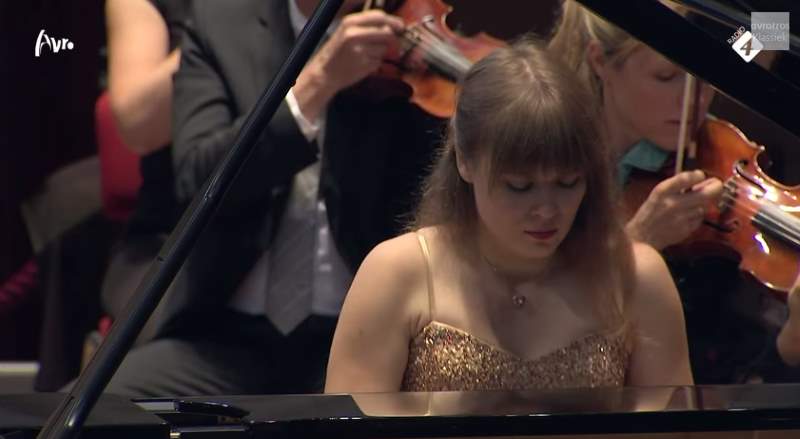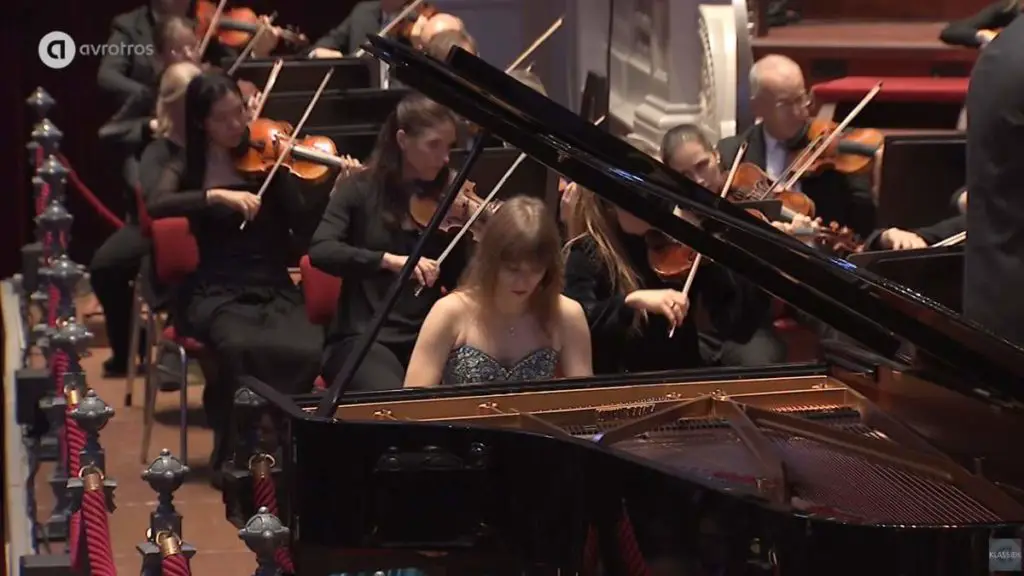Accompanied by the Sinfonieorchester Sankt Gallen (Sankt Gallen Symphony Orchestra), Ukrainian classical pianist Anna Fedorova performs Sergei Rachmaninoff’s Piano Concerto No. 1 in F# minor, Op. 1. Conductor: Modestas Pitrenas. Recorded during the NPO Radio 4 Sunday Morning Concert on Sunday, February 2, 2020, in the Het Concertgebouw in Amsterdam. Published by the AVROTROS Klassiek channel.
Sergei Rachmaninoff’s Piano Concerto No. 1
Sergei Rachmaninoff composed his Piano Concerto No. 1 in F# minor, Op. 1, in 1891, at the age of 18. He dedicated the work to Alexander Siloti (9 October 1863 – 8 December 1945), the Russian virtuoso pianist, conductor, and composer. He revised the work thoroughly in 1917.
The work is in three movements:
- Vivace (F# minor). This contrast with the later works can be heard in the opening bars, where a brass fanfare precedes a flourish of double octaves and chords on the piano – a musical gesture similar to the Schumann and Grieg piano concertos. This flourish occurs later in the movement, as well, an important factor in the symmetry of the movement. The main theme (like the other themes in this work common to both versions) is short by Rachmaninoff’s standards but already shows the sequential devices and arch-like design inherent in his later works.
- Andante cantabile (D major). This reflective nocturne is only 74 bars long. The texture is less cumbersome in the revised version; the harmonies remain the same but are enlivened by occasional chromatic notes.
- Allegro scherzando (F# minor – F# major) [1917 version: allegro vivace]. In the finale of his Piano Concert No. 1, Sergei Rachmaninoff replaced an initially drab opening with a fortissimo passage alternating between time signatures of 9/8 and 12/8. This movement is in sonata-rondo form, in which the development is a lengthy section in E-flat major. A maestoso reemergence of the concerto’s main theme was eliminated. In the original version, he had attempted to use this theme in an upward sequential treatment similar to what he would do later in the Second and Third Concertos. The problem here was that the theme did not lend itself so easily to this treatment, thus sounding contrived. It also came too late in the movement to have the right expansive effort prevalent in the other concertos.
Sources
- Piano Concerto No. 1 (Rachmaninoff) on Wikipedia
Latest posts by M. Özgür Nevres (see all)
- Baroque Concert with Countertenor Jakub Józef Orlinski [Pieces by Handel, Cavalli, Boretti & others] - October 12, 2024
- Bruch: Violin Concerto No. 1 [Janine Jansen] - October 11, 2024
- Cecilia Bartoli sings Ombra Mai Fu [From Händel’s Serse] - October 10, 2024


